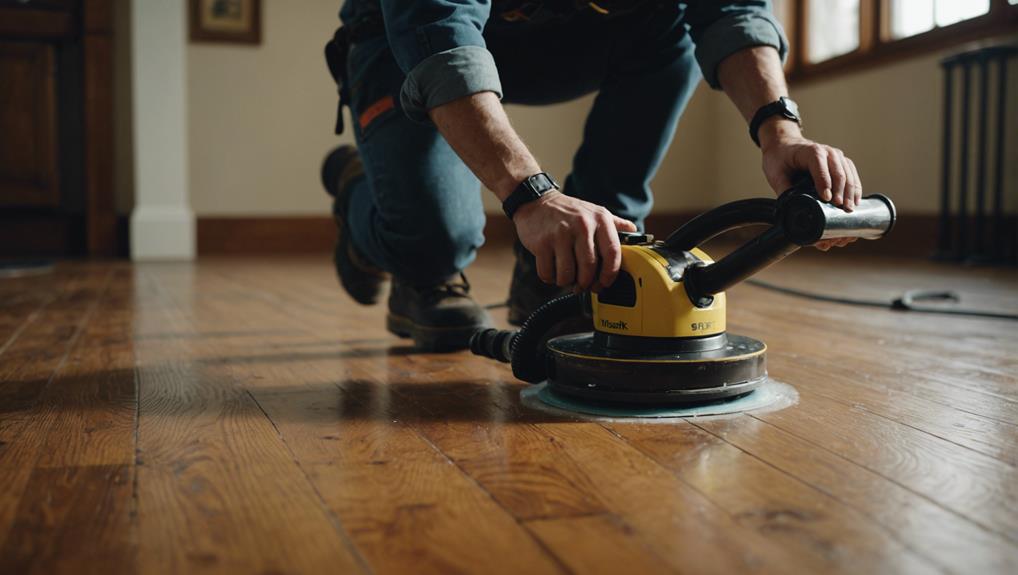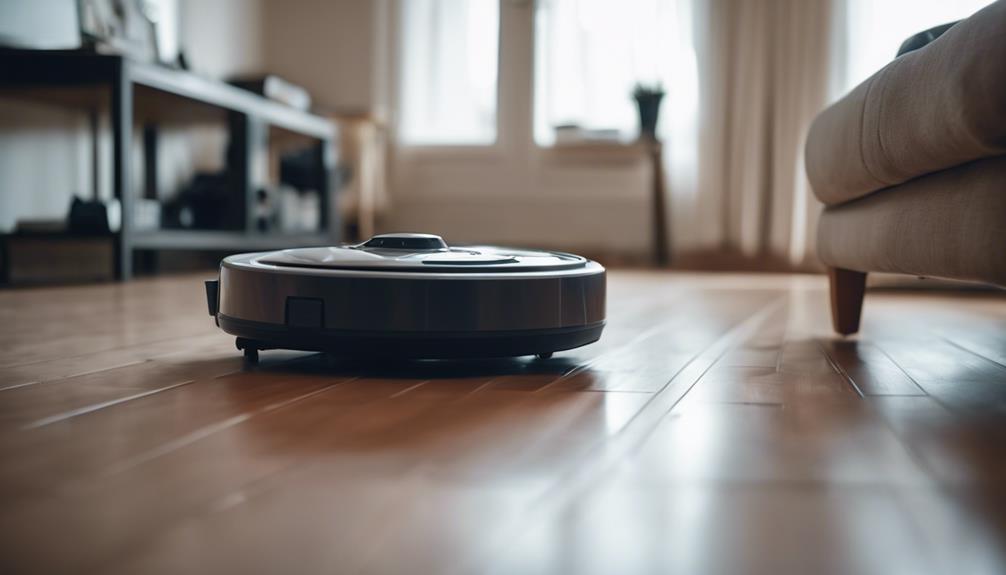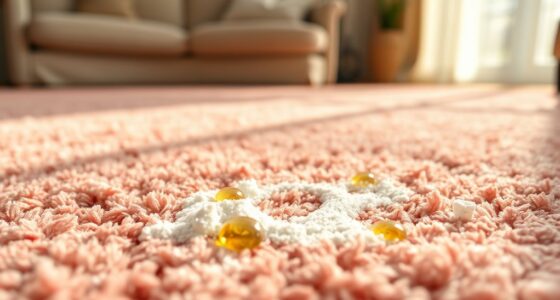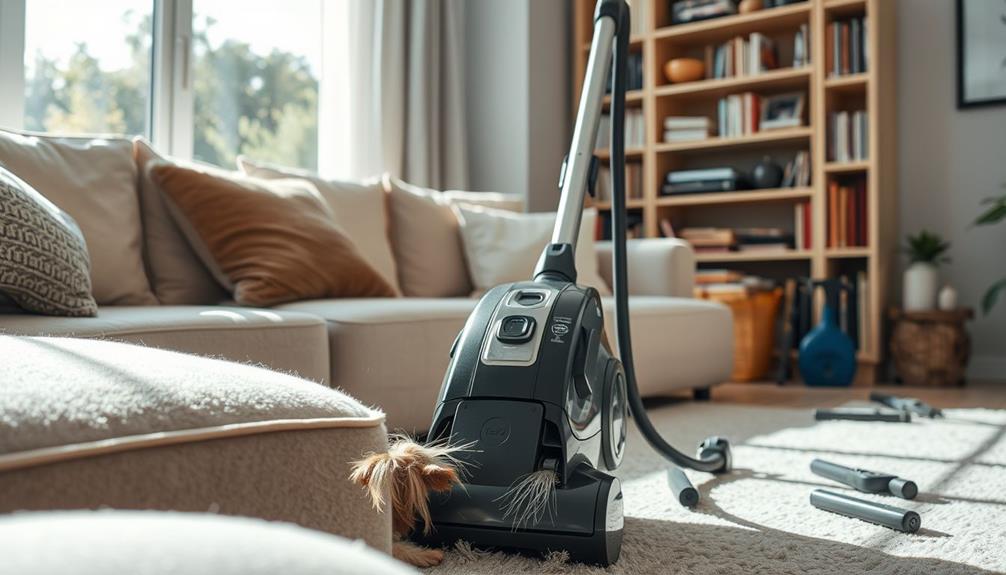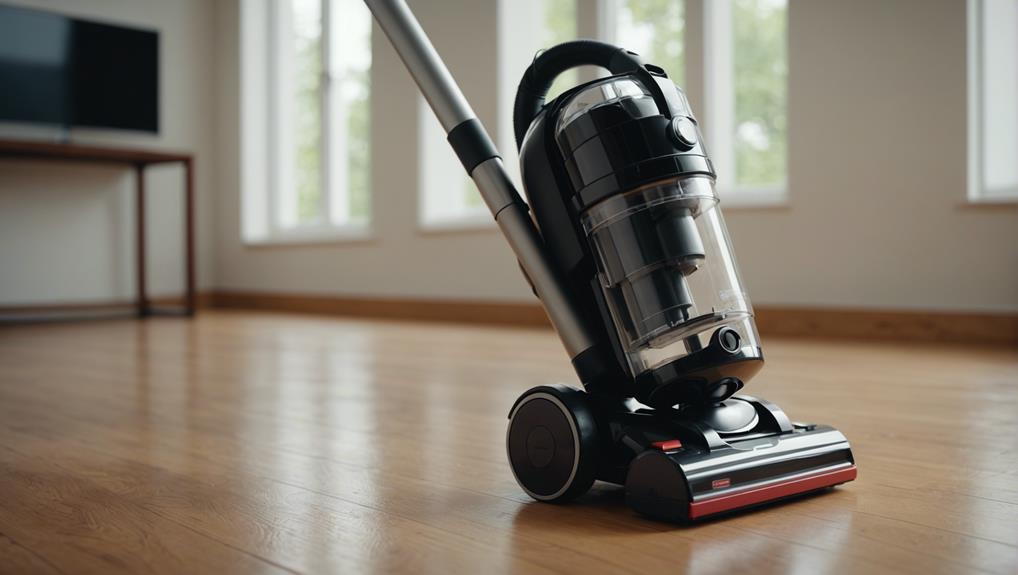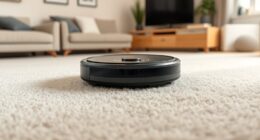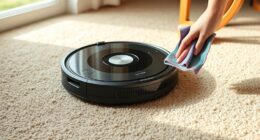To refinish hardwood floors like a professional, start by clearing the room and checking for any damage. Patch up any holes, secure loose boards, and vacuum any debris. Begin sanding with a drum sander, starting with coarse grit and gradually moving to fine grit. Apply stain evenly, wiping off any excess, and then add thin layers of polyurethane coats. To achieve a smooth finish, buff the floors with a fine-grit screen. Use a buffer between coats for added durability. Remember, paying attention to detail is crucial for achieving a professional look. For more refinishing tips and expert techniques to perfect your hardwood floors, click here.
Key Takeaways
- Properly prepare the floor by clearing, patching, and sanding thoroughly.
- Apply stain and multiple thin coats of polyurethane for protection.
- Focus on high-traffic areas with extra coats of polyurethane.
- Buff floors between polyurethane coats for a professional finish.
- Use proper equipment like sanders, buffers, and quality materials for best results.
Floor Preparation
Prepare your hardwood floors by clearing the room of furniture, rugs, and baseboards before beginning the refinishing process.
It's important to conduct a water drop test to determine if your wood floors need refinishing. Simply place a water droplet on the floor – if it beads up, your finish is intact; however, if it soaks in, it's time for a refinish.
Patch any holes or damage on the floor to ensure a smooth surface for refinishing. Seal any openings to prevent wood particles from spreading during the process.
Before refinishing, make sure you secure any loose floorboards and hammer down any protruding nails to avoid any disruptions.
To start the refinishing process effectively, remove any debris using a vacuum cleaner or mop.
Sanding Techniques
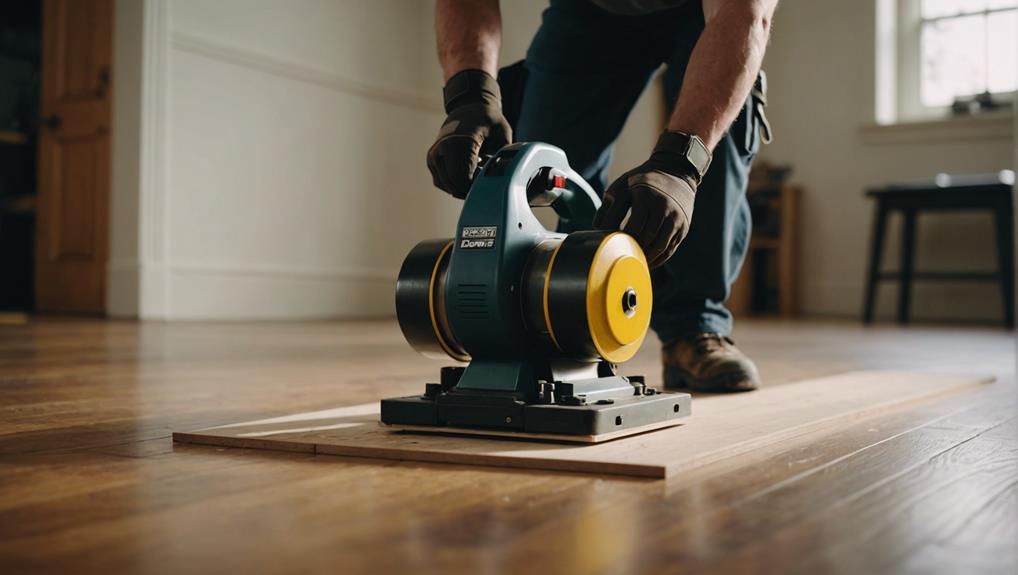
To achieve a smooth and even surface for refinishing your hardwood floors, utilize a drum sander with coarse sandpaper starting at 16-grit for walk-behind sanders or 40-grit for belt-style sanders. Progress to finer sandpapers like 40-grit, 80-grit, and 120-grit for a smoother surface before sealing. Edge sanders are ideal for corners and edges, ensuring a consistent finish throughout the floor. Screen sanding with a fine-grit screening pad provides a final pass for an even and smooth surface. Lightly sand after the first coat of finish dries using 220-grit abrasive for a polished and flawless look.
| Sanding Equipment | Sandpaper Type | Purpose |
|---|---|---|
| Drum Sander | Coarse (16-grit) | Initial sanding for rough surface |
| Edge Sander | Fine (120-grit) | Detail work on corners and edges |
| Screen Sanding | Fine (120-grit) | Final pass for an even and smooth surface |
Staining and Sealing

For a rich color on your hardwood floors, apply Minwax Oil-Based Stain using an applicator pad. Guarantee even coverage by wiping off excess stain with a clean application pad.
To achieve a durable finish, use thin coats of polyurethane applied with a foam roller. After the first polyurethane coat, buff the floors with a 220 grit screen for a smooth surface.
Focus on high-traffic areas when applying 3-4 coats of polyurethane to provide enhanced protection against wear and tear. By following these steps, you can achieve a stunning look for your hardwood floors while ensuring they're well-protected in areas prone to heavy use.
Applying Finish Coats
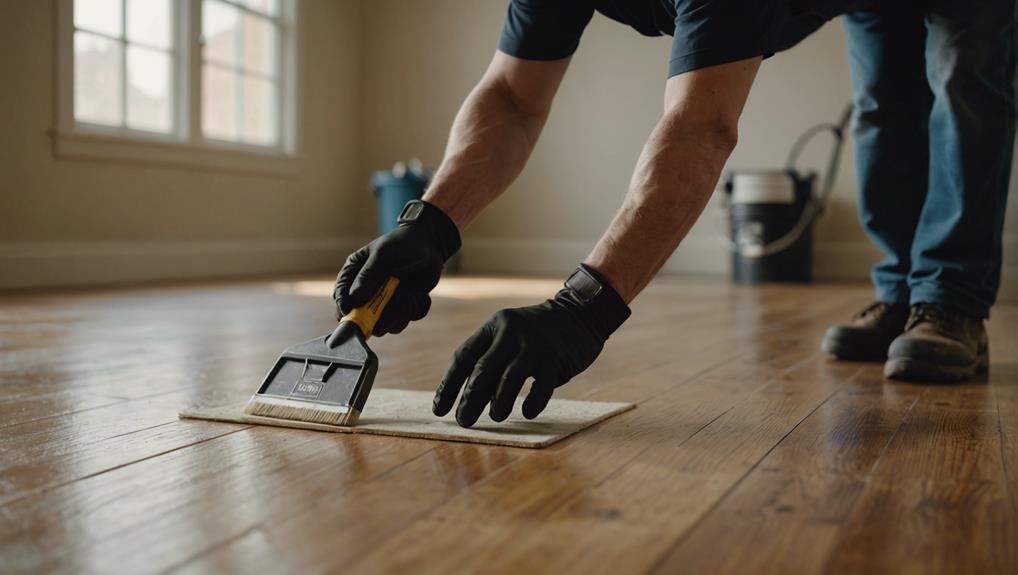
To guarantee your hardwood floors receive the necessary protection and durability, the process of applying finish coats is essential.
When applying finish coats to your hardwood flooring, remember to use a polyurethane finish for best results. Start by using a foam roller for an even coat application. Focus on high traffic areas first to make sure these spots are well-protected.
Between each coat, lightly sand the surface to promote adhesion and create a smooth finish. It's important to allow each coat to dry completely before moving on to the next one. This ensures the finish adheres properly and results in a professional-looking outcome.
Buffing for a Professional Finish
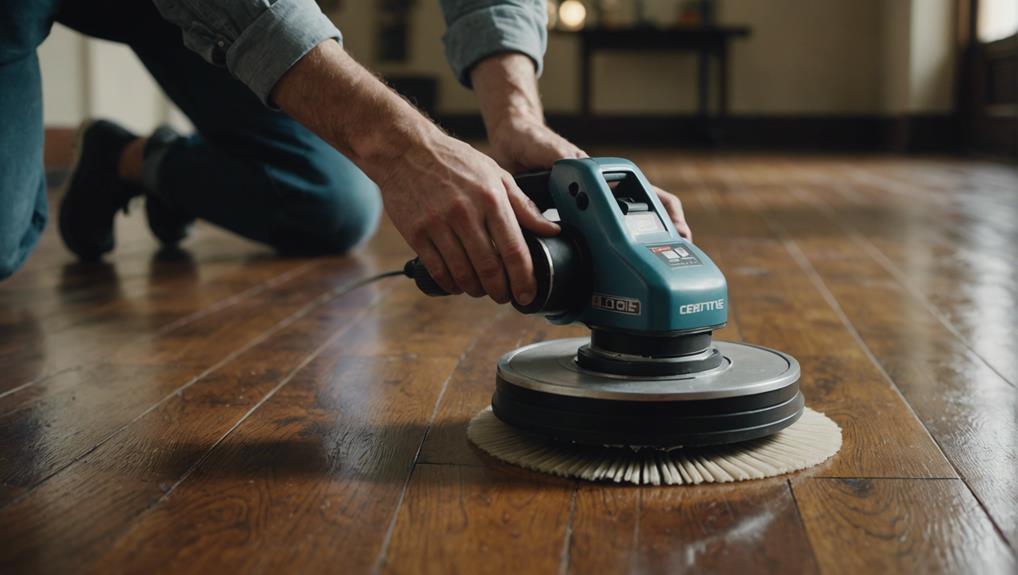
Buffing hardwood floors is a critical step in achieving a smooth and professional finish during the refinishing process. By utilizing a buffer or floor polisher with a fine-grit screening pad, you can effectively even out the surface after applying coats of polyurethane. This process helps in removing imperfections, smoothing out raised wood fibers, and enhancing the overall aesthetic appeal of your floors.
Buffing is typically done between polyurethane coats to guarantee each layer adheres properly, resulting in a seamless finish. Proper buffing technique plays a significant role in the longevity of your refinished hardwood floors. It contributes to the overall durability of the finish and maintains the floor's visual appeal over time.
Ensuring a thorough buffing process won't only improve the look of your floors but also help in creating a professional finish that enhances the beauty of your space.
Frequently Asked Questions
How Do You Refinish Floors Like a Pro?
Assess the condition of your floors for signs like discoloration or wear. Prepare the room by removing furniture and patching any damage. Use sanding equipment for a smooth finish, clean thoroughly, apply sealer, and finish with polyurethane for durability.
How to Refinish Hardwood Floors for Beginners?
Ready to transform your space? Start your refinishing journey by evaluating your hardwood floors. Gather tools, sand diligently, clean thoroughly, and finish with care. Embrace the process, and soon you'll have beautifully refinished hardwood floors to enjoy!
Is It Worth It to Refinish Hardwood Floors Yourself?
Refinishing hardwood floors yourself is worth it for the savings, control over materials, and project timeline. With proper prep and attention to detail, you can achieve pro results. Rent equipment for cost-effective DIY.
How to Make Old Hardwood Floors Look Better Without Refinishing?
To make old hardwood floors look better without refinishing, start by buffing and waxing for shine. Don't stress about a full redo; consider wood floor cleaner for grime removal and a revitalizer for protection. Add rugs strategically for style and protection.
How Can I Refinish Hardwood Floors to Make Them Pet-Friendly?
When looking to make your hardwood floors pet-friendly, consider top hardwood flooring options like bamboo, engineered hardwood, or laminate. These materials are durable and scratch-resistant, making them a great choice for homes with pets. Additionally, be sure to choose a finish that provides extra protection against scratches and stains.
Can the Materials and Techniques Used for Refinishing Hardwood Floors be Applied to Winterizing a Pool?
When it comes to “prepare your pool for winter,” the materials and techniques used for refinishing hardwood floors may not be directly applicable. However, you can use pool covers to protect it from the elements and winterize the plumbing system to prevent freezing. It’s important to consult a professional for guidance.
Conclusion
To sum up, refinishing hardwood floors can be a rewarding DIY project that can transform the look of your home. By following the steps outlined in this guide, you can achieve professional-looking results without breaking the bank. Remember to take your time, follow safety precautions, and pay attention to detail for a stunning finish that will impress guests and add value to your home.
Happy refinishing!
